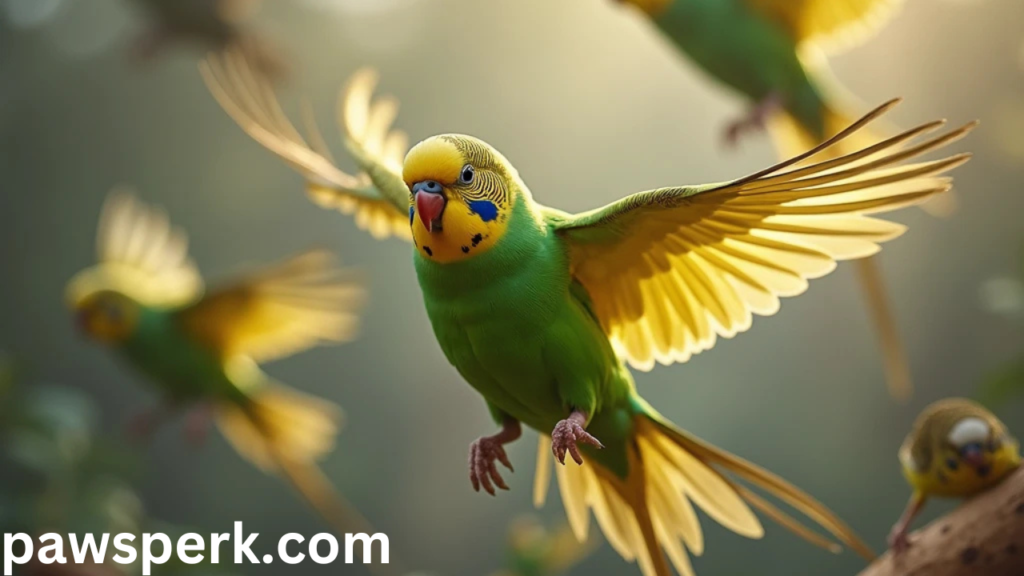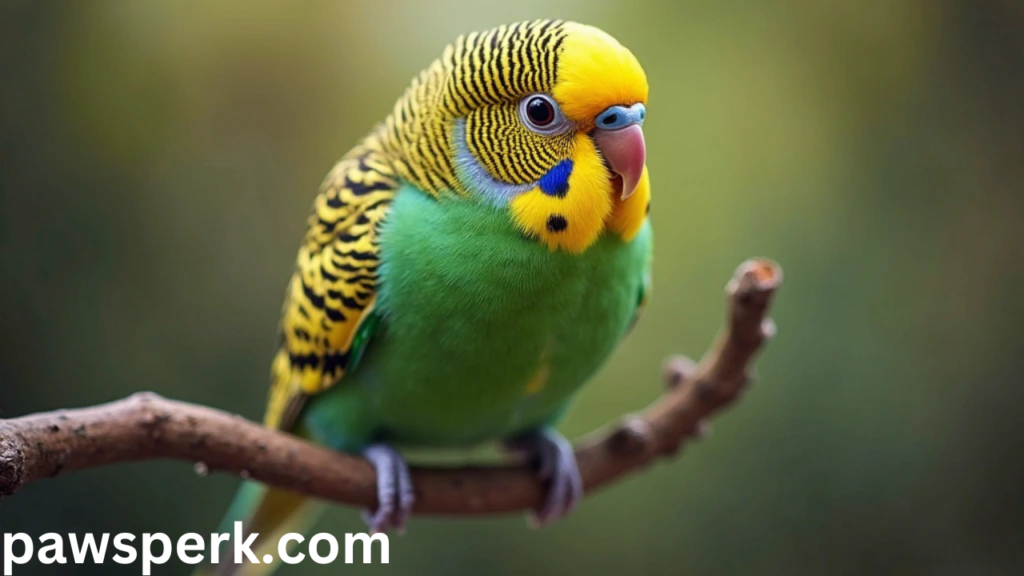Budgerigar is a vibrant and intelligent pet bird loved by bird enthusiasts worldwide. Known for its playful nature and ability to mimic sounds, the Budgerigar makes a delightful companion. These small parrots thrive on social interaction, a balanced diet, and proper care. Whether you’re a beginner or an experienced bird owner, understanding Budgerigar behavior, diet, and habitat needs is essential for their well-being. With their bright colors and friendly personalities, Budgerigars bring joy to any home. This guide covers everything you need to know about keeping a Budgerigar happy and healthy.
Origins and Natural Habitat: Outback Australian Survivors
Because they have developed to withstand harsh temperatures and limited supplies, budgerigars flourish in Australia’s arid and harsh terrain. Unlike many pets, wild budgies travel thousands of miles in big flocks in search of food and water. In order to survive, these flocks—which can occasionally number in the hundreds—use eye-catching flying displays to trick hawks and other predators.
Their existence in erratic conditions is guaranteed by their capacity to reproduce quickly following rain. Long before they became housemates, they were successful in their evolutionary process, as evidenced by their resilience.
You may also like: Fahaka Puffer Care: A Guide to This Unique Freshwater Predator
Physical Features: The Design Palette of Nature
Averaging 7 inches in length, budgies have thin bodies designed for quick flying. Captive breeding has produced a variety of colors, including blues, whites, violets, and even lacewing (pastel) varieties; however, the traditional green-and-yellow plumage of wild budgies is ideal for hiding in grasslands.
The UV-reflective pigments in their feathers allow them to see patterns that humans cannot see, although many people are not aware of this. This ultraviolet vision affects the choice of mates; healthier birds have richer UV colors, which creates a colorful dance of light and shade during courtship.
Conduct and Social Organization: The Craft of Flock Management
In the wild, budgies live in close-knit, socially hierarchical flocks. They communicate using chirps, whistles, and a range of body language. For example, a budgie’s beak grinding signifies happiness, while its rapid head-bobbing may be an indication of excitement or a mating display.
Isolation can cause stress because of their social nature. In captivity, a lone budgie may develop a close bond with its owner or, if neglected, may display problematic behavior. This illustrates their wild propensity to look for protection and companionship in a group.
An Overview of the History of Domestication: From Backwoods to Living Rooms
Victorians were charmed by the exotic allure of budgies when they were first introduced to Europe in the 1840s. Due to careful breeding, they became commonly available as pets by the 20th century. But their fame obscures a darker past: early budgies kept in captivity frequently endured harsh living conditions. Although rules for bird welfare and ethical breeding have improved in recent years, issues like mass production still exist in some areas.
Budgerigar Maintenance: More Than Just Water and Seed
Contrary to popular perception, budgies require more than a diet of seeds. They hunt insects, fruits, and grasses in the wild. Pellets, fresh vegetables (such as spinach and carrots), and occasionally fruit treats make up a pet budgie’s balanced diet. Chocolate and avocado are harmful, so stay away from them!
Cage setup matters too. A minimum size of 18x18x24 inches allows room for flight. Include natural perches (avoid plastic) and toys like swings or puzzle feeders to mimic mental stimulation found in nature. Budgies are curious; a bored budgie may pluck its feathers or become vocal for attention.
Training and Bonding: Building Trust with Your Feathered Friend
Budgies are intelligent, capable of learning tricks, recognizing words, and even mimicking sounds (ever heard a budgie “answer” a ringing phone?). Training requires patience: start by offering millet from your hand, then introduce simple commands like “step up.” Consistency and positive reinforcement build trust.
Fascinatingly, female budgies may be more territorial, but males tend to be more talkative and mimicking. However, every bird is different; some may sing to you, while others would rather tear apart paper toys.
Longevity and Health: Guaranteeing a Fulfilling Life
Budgies can survive for ten to fifteen years if given the right care. Frequent health problems include fatty liver disease (associated with diets high in seeds) and respiratory infections (frequently caused by dusty settings). Lethargy, fluffed feathers, or changes in droppings are indicators of sickness. Prevention requires a clean cage and routine veterinary examinations.

Unusual Perspectives: The Budgie’s Secret Skills
Recent research has demonstrated babies’ problem-solving skills. They have demonstrated cognitive capacities comparable to those of larger parrots in studies where they have learned to manipulate items in order to gain food. Wild budgies are remarkably adept at learning vocalizations; they modify their calls to blend in with new flocks, which facilitates socializing.Budgies have influenced art and symbolism throughout culture. In Japan, budgie cafes provide therapeutic contact with these chirpy friends, while Indigenous Australian stories portray them as symbols of adaptation.
Conclusion: The Allure of Budgerigars
Budgerigars combine intelligence, adaptability, and beauty. They serve as a reminder of the inventiveness of nature, whether they are interacting with people or traversing the Australian Outback. They provide company to prospective owners but also come with a duty; their care reflects their untamed origins, necessitating social connection, space, and excitement.



One Response